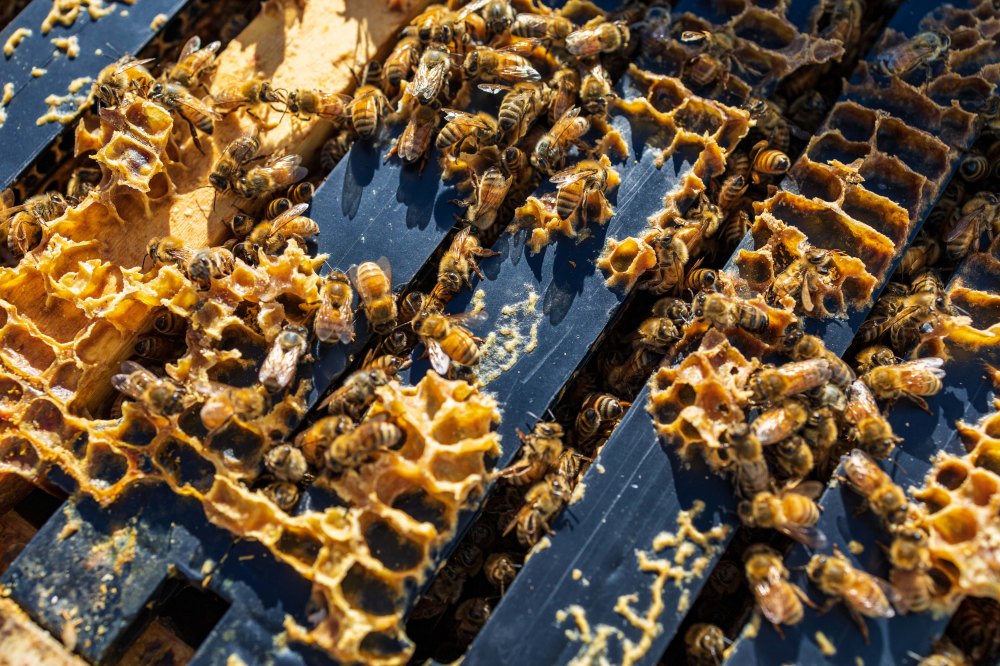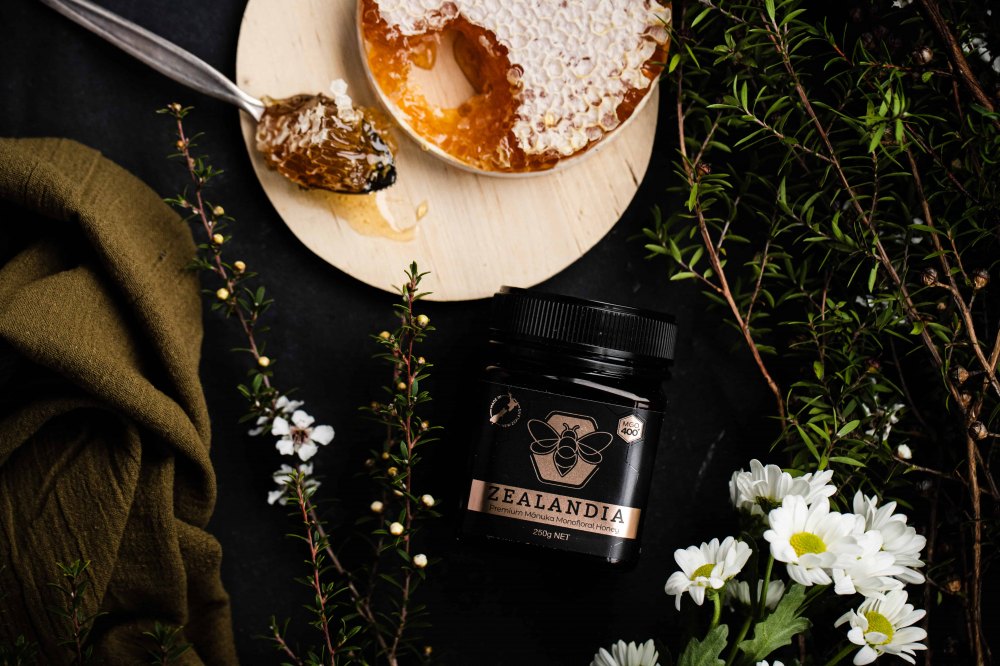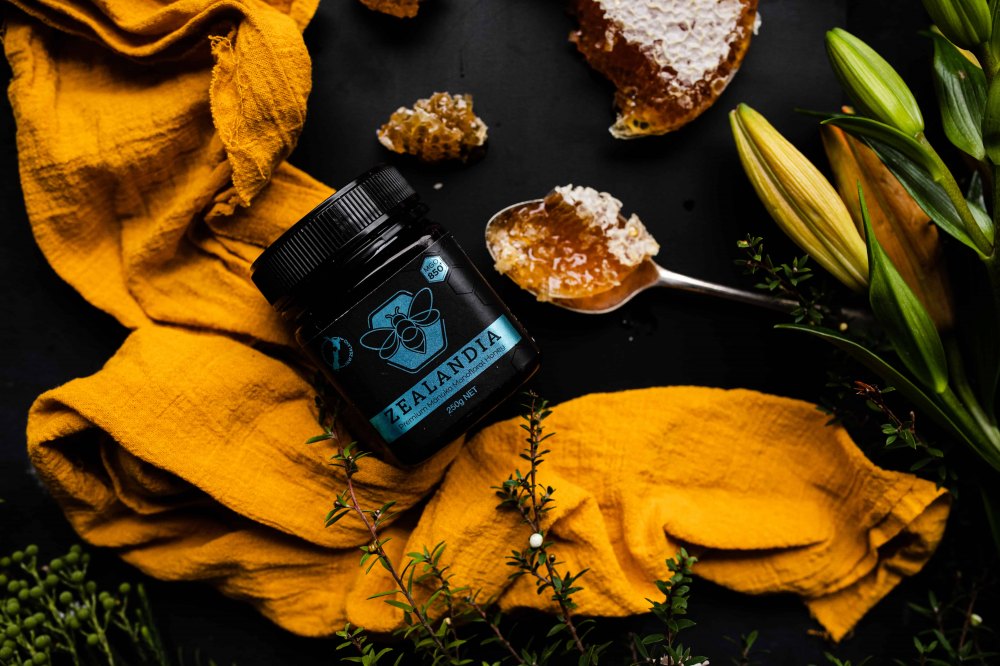
Rating systems
Methylglyoxal (MGO)
Methylglyoxal is unique to honey from the Mānuka flowers. It has properties that are known around the world and has been used by Māori people of Aotearoa for centuries.
Learn more about different rating systems for Manuka honey. MGO is a trusted, simple system that will indicate the amount of methylglyoxal in milligrams per kilogram of honey verified by independent and accredited laboratories.
The reason to trust the MGO Rating system is that it has simplicity at heart. There are no hard conversions. It is not a paid membership like many other rating systems.
It simply just displays the amount of MGO in your honey that is quantified by independent accredited laboratories and indicated on the label in milligrams per kilogram.
Learn more about different rating systems for Manuka honey. MGO is a trusted, simple system that will indicate the amount of methylglyoxal in milligrams per kilogram of honey verified by independent and accredited laboratories.
The reason to trust the MGO Rating system is that it has simplicity at heart. There are no hard conversions. It is not a paid membership like many other rating systems.
It simply just displays the amount of MGO in your honey that is quantified by independent accredited laboratories and indicated on the label in milligrams per kilogram.
Frequently Asked Questions
FAQs
What is MGO in Manuka honey?
MGO was long sought after in the science world. It stands for Methylglyoxal which is a naturally occurring compound in Mānuka honey.
But not all Mānuka honey is the same, MGO levels can vary greatly per batch and therefore we send our samples to independent laboratories to test for the amount of Methylglyoxal in milligrams per kilogram present in your honey.
Why is there MGO in Manuka honey?
In 2009, scientists at the University of Waikato (Christopher Adams, Merilyn Manley-Harris and Peter Molan) published research that showed that the methylglyoxal in New Zealand Manuka honey originates from the chemical compound dihydroxyacetone (DHA), which is present in the nectar of manuka flowers to varying degrees.
This research found that “nectar washed from Manuka flowers contained high levels of dihydroxyacetone and no detectable methylglyoxal.” Furthermore, “Manuka honey, which was freshly produced by bees, contained low levels of methylglyoxal and high levels of dihydroxyacetone. Storage of these honeys at 37 degrees Celcius led to a decrease in the dihydroxyacetone content and a related increase in methylglyoxal.”
Which shows the relationship and significance of the conversion of DHA to MGO.
Can DHA be found in other honey varieties?
DHA is unique to Manuka nectar, and has not been found in any other floral types of honey. The conversion of DHA to MG occurs slowly over time, and there are almost certainly other compounds in honey that affect this conversion. This is the subject
of a lot of recent and current research. The conversion of DHA to MG is not a 1:1 reaction and current research will help us to better understand this conversion in the future. When we matured the most potent Manuka honey in the world our CEO already saw the potential of the DHA ratio that would later convert into a honey with a potency of MGO 1717+.
Read more about the most potent Manuka honey in the world, our Limited Reserve 21.
How do you know the MGO potency of honey?
Measuring the DHA in freshly harvested honey tells the beekeeper about the potential that honey has to develop MG (and therefore NPA/UMF®) in the future. Honey with a higher starting DHA concentration has the potential to have higher MG concentration after storage than a honey with a lower starting DHA concentration.
Zealandia Honey works only with selected beekeepers and sends samples to independently accredited laboratories throughout New Zealand to test the potency of our Manuka honey at multiple stages in the supply chain.
How can I verify my product is real?
Zealandia Honey has a well established track and trace system which will indicate the location your honey was harvested. Only true batch numbers and QR codes that we generate are recognised by the system and consumers can verify the date of manufacture, origin of the product and if the batch number matches type of honey they have purchased.
MGO was long sought after in the science world. It stands for Methylglyoxal which is a naturally occurring compound in Mānuka honey.
But not all Mānuka honey is the same, MGO levels can vary greatly per batch and therefore we send our samples to independent laboratories to test for the amount of Methylglyoxal in milligrams per kilogram present in your honey.
Why is there MGO in Manuka honey?
In 2009, scientists at the University of Waikato (Christopher Adams, Merilyn Manley-Harris and Peter Molan) published research that showed that the methylglyoxal in New Zealand Manuka honey originates from the chemical compound dihydroxyacetone (DHA), which is present in the nectar of manuka flowers to varying degrees.
This research found that “nectar washed from Manuka flowers contained high levels of dihydroxyacetone and no detectable methylglyoxal.” Furthermore, “Manuka honey, which was freshly produced by bees, contained low levels of methylglyoxal and high levels of dihydroxyacetone. Storage of these honeys at 37 degrees Celcius led to a decrease in the dihydroxyacetone content and a related increase in methylglyoxal.”
Which shows the relationship and significance of the conversion of DHA to MGO.
Can DHA be found in other honey varieties?
DHA is unique to Manuka nectar, and has not been found in any other floral types of honey. The conversion of DHA to MG occurs slowly over time, and there are almost certainly other compounds in honey that affect this conversion. This is the subject
of a lot of recent and current research. The conversion of DHA to MG is not a 1:1 reaction and current research will help us to better understand this conversion in the future. When we matured the most potent Manuka honey in the world our CEO already saw the potential of the DHA ratio that would later convert into a honey with a potency of MGO 1717+.
Read more about the most potent Manuka honey in the world, our Limited Reserve 21.
How do you know the MGO potency of honey?
Measuring the DHA in freshly harvested honey tells the beekeeper about the potential that honey has to develop MG (and therefore NPA/UMF®) in the future. Honey with a higher starting DHA concentration has the potential to have higher MG concentration after storage than a honey with a lower starting DHA concentration.
Zealandia Honey works only with selected beekeepers and sends samples to independently accredited laboratories throughout New Zealand to test the potency of our Manuka honey at multiple stages in the supply chain.
How can I verify my product is real?
Zealandia Honey has a well established track and trace system which will indicate the location your honey was harvested. Only true batch numbers and QR codes that we generate are recognised by the system and consumers can verify the date of manufacture, origin of the product and if the batch number matches type of honey they have purchased.
MGO 100+
Zealandia Honey® Bronze
A multifloral honey that has a sweet taste, the ultimate introduction to Manuka honey as it does not have too much of the distinct Manuka honey bittersweet after taste. Spice up as salad by using this as a honey dressing.
Suggested use: Baking, daily use, replacement for refined sugars
A multifloral honey that has a sweet taste, the ultimate introduction to Manuka honey as it does not have too much of the distinct Manuka honey bittersweet after taste. Spice up as salad by using this as a honey dressing.
Suggested use: Baking, daily use, replacement for refined sugars
MGO 400+
Zealandia Honey® Rose Gold
Not only to consume but also powerful for topical application. Create a lush moisturiser with essential oils and spoil yourself with your own skin spa. Besides that it's a tasty addition to your breakfast.
Suggested use: Weekly use, Topical applications, breakfast booster
Not only to consume but also powerful for topical application. Create a lush moisturiser with essential oils and spoil yourself with your own skin spa. Besides that it's a tasty addition to your breakfast.
Suggested use: Weekly use, Topical applications, breakfast booster
MGO 850+
Zealandia Honey® Cobalt
An exclusive product, for real honey lovers. Sufficiently matured to achieve the right balance of MGO and DHA, the two key compounds in Manuka Honey. You don't want to heat this honey so don't use it in your tea or baking. Targeted use is best, so if you need to feel free to be generous to yourself and have a spoon.
Suggested use: Targeted use, premium product, direct consumption
An exclusive product, for real honey lovers. Sufficiently matured to achieve the right balance of MGO and DHA, the two key compounds in Manuka Honey. You don't want to heat this honey so don't use it in your tea or baking. Targeted use is best, so if you need to feel free to be generous to yourself and have a spoon.
Suggested use: Targeted use, premium product, direct consumption



